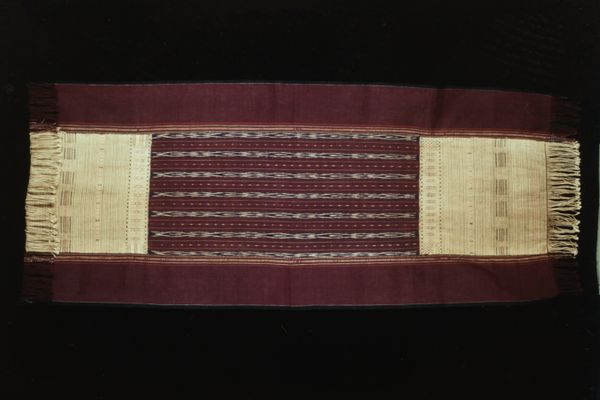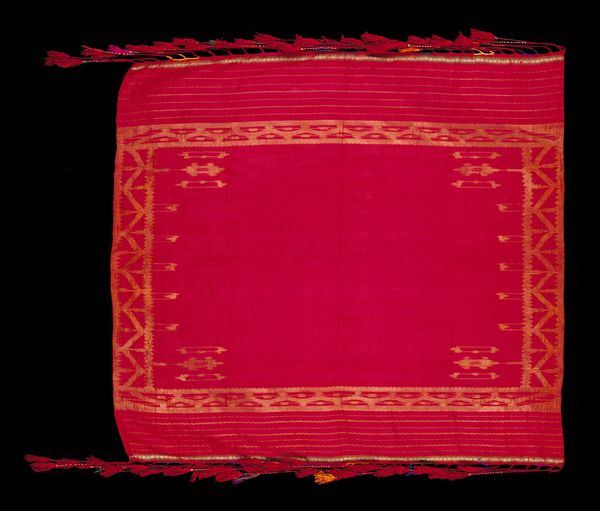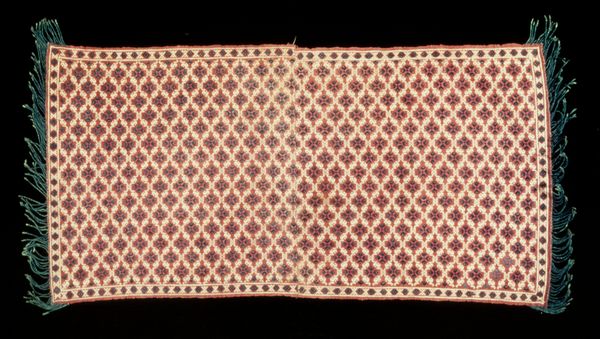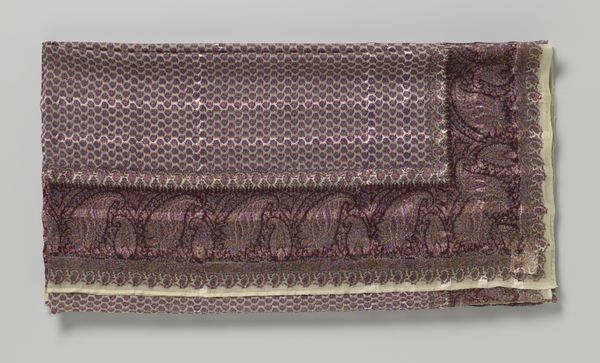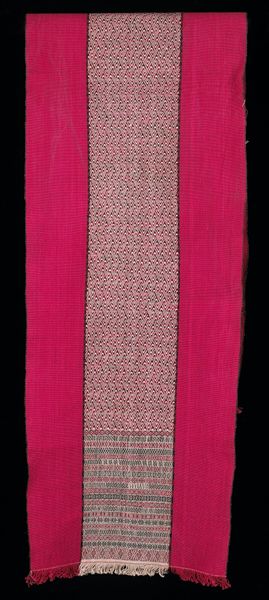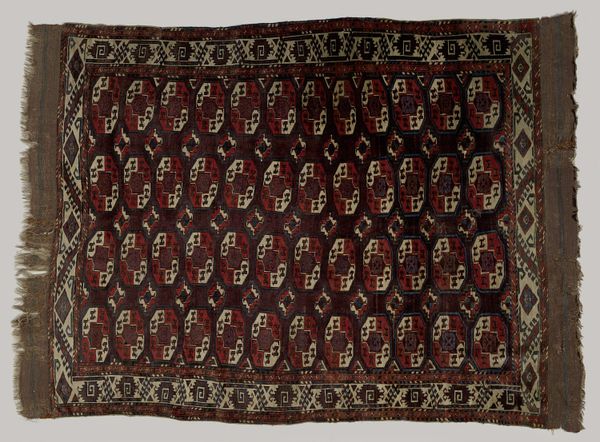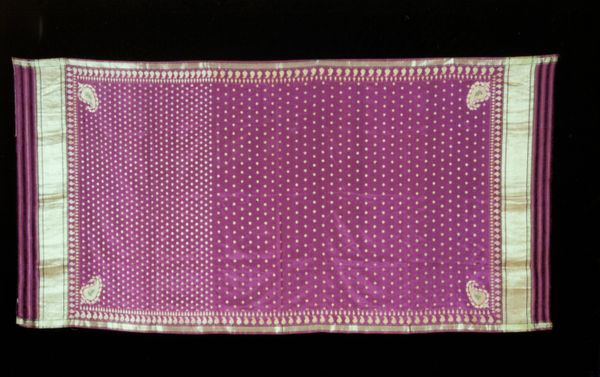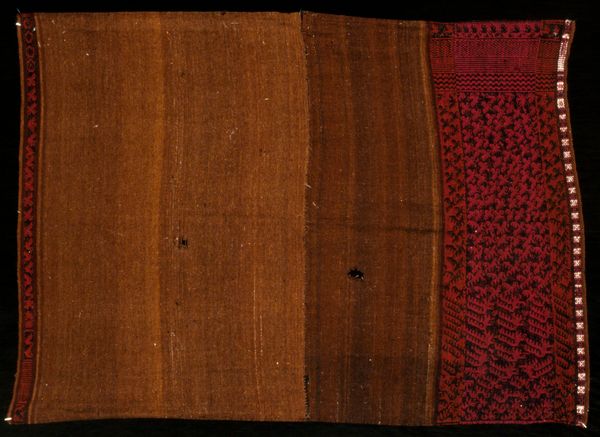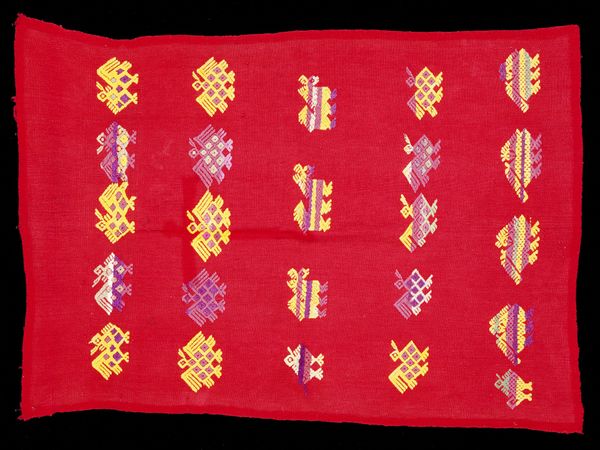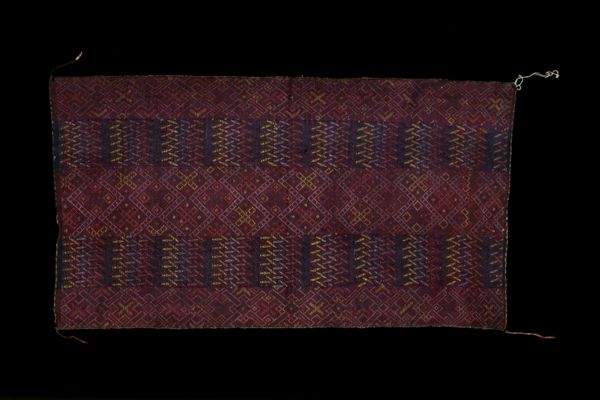
silk, textile
#
silk
#
pattern
#
asian-art
#
textile
#
decorative-art
Copyright: Public Domain
This sari was likely made in India using cotton or silk, dyed and resist-printed to create an intricate pattern. The process known as "bandhani" involves tying small knots into the fabric before dyeing it. These tied areas resist the dye, resulting in tiny dots that form patterns across the cloth. Look closely, and you'll see how the maker has incorporated rows of paisley motifs along one edge, likely using wood blocks dipped in dye. This skilled technique required careful alignment and pressure to achieve a clear, consistent impression. The entire process, from preparing the fabric to the final print, would have been incredibly labor-intensive, involving many hands. The production of textiles like this often provides livelihoods for entire communities, and connects to global networks of trade and consumption. Appreciating the work that has gone into creating this sari helps us move beyond conventional ideas about craft, and recognize the deep cultural and economic significance of handmade objects.
Comments
No comments
Be the first to comment and join the conversation on the ultimate creative platform.
